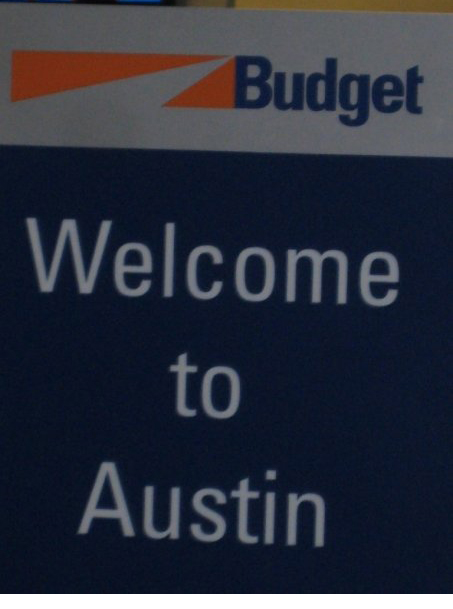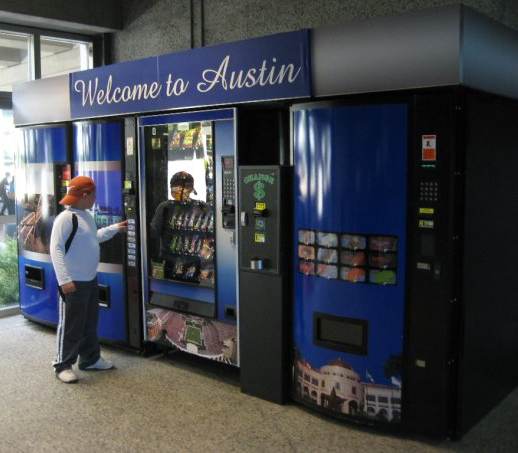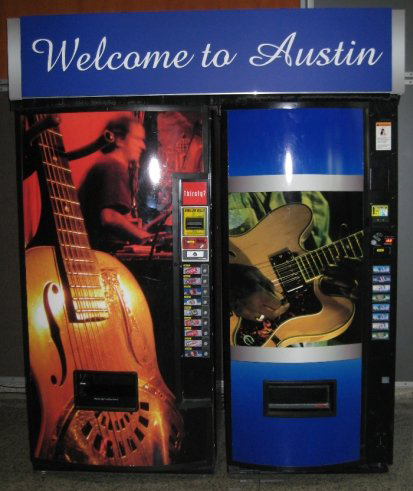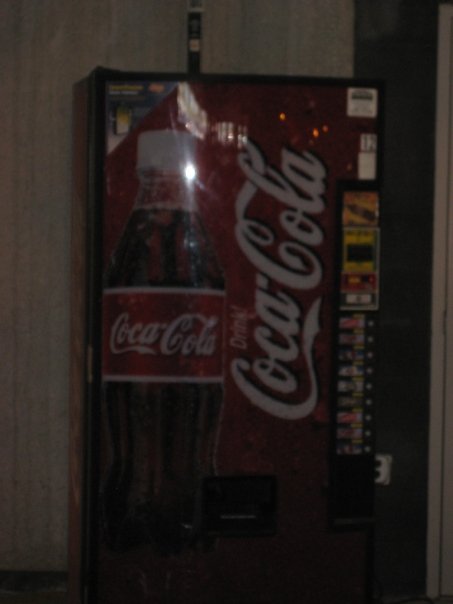Performing Austin


There is a distinct way in which many of the signs, and even the lack of certain signs
in certain places, establishes a code about the city of Austin. In fact, many of the
signs which seem to sell Austin like a set of metasigns act in synecdochal ways that
make the airport represent Austin. The "Welcome to Austin" signs are placed everywhere
in the Airport, even calling out to people who came from Austin and are leaving without
ever leaving Austin and not needing to be welcomed to a place they have lived in forever.
They hang over the main decending staircase, over vending machines, and have subtle
reminders etched into the bathroom mirrors, claiming that they stand for "reality, Texas,
mythology." Maybe the most interesting welcome comes from Budget Rent-a-Car, which apparently
believes it has the power/knowledge to welcome people to Austin. Is it possible, and if
so how, that the Austin-Bergstrom International Airport gains its ability to welcome people
to the city by the synecdochal way it places itself as the city? If so, it would make sense
that things like bathrooms and Budget signs would be able to carry this label; if the airport
is Austin, then everything in the airport is therefore a part of Austin as a whole.
The city then becomes this sort of mish-mash of companies instead of a city where people
live and work. When speaking in such a way, it is important to find the boundaries of
theory. Everything comes into focus when one considers the lone coke machine sitting
in the middle of the parking garage. Compared to the soda machines inside, it is plain,
similar to all coke machines found outside the airport, and undefined by its surroundings,
more paradigmatic than anything else. At the same time, the coke machines under the "Welcome
to Austin" sign inside the airport are covered with musicians and instruments, a common
sight in the live music capitol of the world. The product hasn't changed, but the way that
it is presented is completely different, its materiality setting the basis for the consumer
to interact with Austin just like it interacts with the coke machine; participation becomes
a window for examining how one should live in or visit Austin. These multiple means of
presentation play upon Appadurai's idea that "things not only have social lives,... they
also have biographies," that they "have agency in the specific, performative social situations
of those locations" (Rose 222-223). The agency of these devices is more than just to sell
their product; it is now to sell Austin as well because they are a part of Austin. Outside
the airport, they are not a part of the airport, therefore not a part of Austin, therefore
have no need to have the "biography" of Austin itself. Without the hook into the social
sphere of the city, the plain, boring coke machine has no "performative social situation"
in which to work. It does not get a make-over because it has nothing to identify with.





HOME
PREVIOUS
NEXT








